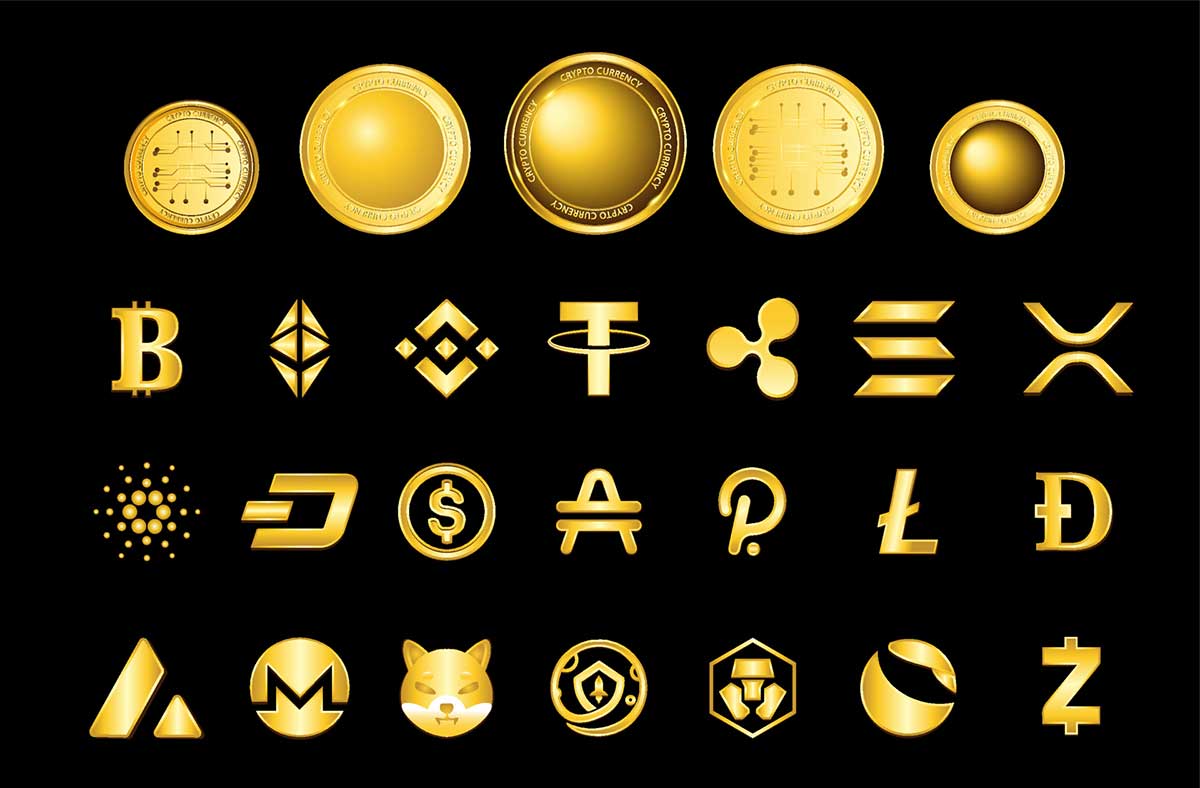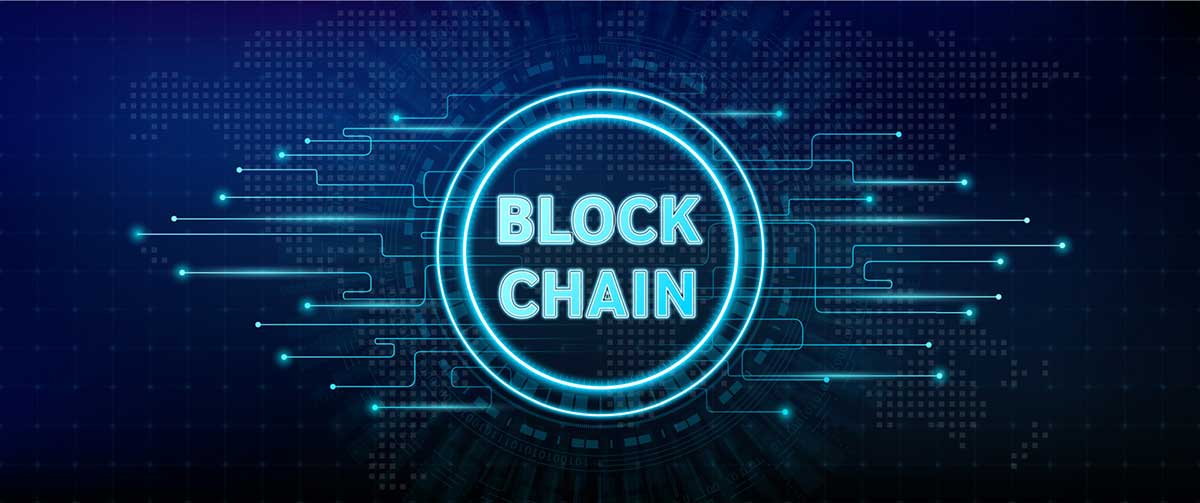Where is the Blockchain Stored: The Ultimate Guide.

The blockchain is stored on multiple computers across a network. It is a decentralized database that is shared by all nodes on the network and constantly updated.
The blockchain technology allows for secure and transparent record-keeping of transactions without the need for a centralized authority. Blockchain technology has revolutionized the way we think about data storage and security. It is a distributed ledger system that allows for secure, transparent record-keeping of transactions without requiring a centralized authority.
The blockchain is a decentralized database that is shared by all nodes on the network. This allows for real-time updates and verification of data, making it an ideal solution for industries such as finance, healthcare, and supply chain management. In this article, we will explore where the blockchain is stored and how it functions in a decentralized network.

Credit: www.blockchains-expert.com
What Is The Blockchain?
Definition Of The Blockchain Technology
In simple terms, a blockchain is a decentralized and incorruptible digital ledger. This means that it’s an online record-keeping system that is distributed across a vast network of computers instead of being owned by a central authority. The blockchain is a continuously growing public ledger that records every transaction that has ever occurred in a secure and transparent manner without the need for intermediaries.
How It Works (Briefly)
A blockchain is composed of several blocks, each containing a set of transactions. When a transaction is initiated, it’s broadcasted to the network of computers, also known as nodes, for verification. Once approved, the transaction is combined with other transactions to form a new block of transactions, which is then added to the existing blockchain.
Each block in the blockchain contains a unique code, known as a hash, that distinguishes it from other blocks. In addition, each block contains a reference to the previous block, creating a chain of blocks that can’t be altered or deleted without corrupting the entire chain.
Characteristics Of The Blockchain
The blockchain technology has several unique characteristics that distinguish it from other technologies. The following are some of the key features of the blockchain:
- Decentralization: The blockchain is decentralized, meaning there is no central authority controlling it.
- Security: The blockchain is tamper-proof and resistant to cyber-attacks due to its cryptographic security features.
- Transparency: All transactions on the blockchain are transparent and visible to anyone on the network. However, personal identification data is kept private.
- Immutability: Once a transaction is recorded on the blockchain, it can’t be modified or deleted.
- Efficiency: The blockchain operates around the clock, processing transactions in real-time without any downtime.
- Cost-effectiveness: The blockchain eliminates the need for intermediaries, thereby reducing the cost of transactions.
The blockchain is a revolutionary technology that is transforming the way we conduct transactions. By providing a secure, decentralized, transparent, and efficient way to transact, the blockchain has the potential to disrupt several industries and change the world as we know it.
How Does Blockchain Storage Work?
Blockchain technology has gathered significant interest from data analysts, entrepreneurs, and governments worldwide. One of the most intriguing aspects of blockchain is the way in which the technology stores data. We’ll delve into the details of blockchain storage and explore the differences between centralized and decentralized storage systems.
Additionally, we’ll discuss the advantages of blockchain storage and understand why it’s become an increasingly popular method for data storage and transmission.
Explanation Of Blockchain Storage
Blockchain is a decentralized digital ledger that records financial transactions and digital assets. This decentralized structure eliminates the need for a central authority to manage the data. Every transaction is recorded as a block and added to the chain, which creates a tamper-proof and transparent record of all the activities.
The storage mechanism of blockchain is unique because it stores data across a distributed network of computers, called nodes. Each node in the network maintains a complete copy of the entire ledger, providing redundancy and keeping the system immune to a single point of failure.
Types Of Blockchain Storage (Centralized And Decentralized)
Blockchain storage systems can be broadly categorized into two categories: centralized and decentralized.
Centralized blockchain storage is owned and operated by a single entity. All the data within the blockchain is stored in a single location, which makes it more vulnerable to hacks and security breaches. However, centralized systems are easier to maintain, can process transactions faster, and are more scalable.
In contrast, decentralized blockchain storage, such as the blockchain network, is owned by the users who participate in the network. Data is stored across multiple nodes, making the system more secure and less prone to hacks. It also eliminates the need for a central authority to manage the data.
Benefits Of Blockchain Storage
The blockchain storage mechanism provides many advantages over traditional data storage systems, including:
- Security: Blockchain is a decentralized network, which means it is much harder to hack than traditional centralized systems. The redundancy of the system makes it practically immutable and tamper-proof.
- Transparency: The ledger is transparent, which means anyone can access it and audit the data stored within. This leads to higher accountability and reduces incidents of fraud.
- Decentralization: The lack of a central authority in the blockchain network provides more control over the data to the users. Data stored in decentralized blockchain systems is more secure and transparent, leaving no room for manipulations.
- Scalability: The blockchain system scales seamlessly and can process a large volume of transactions at any given point in time, making it more applicable to various industries, including supply chain management, finance, logistics, and e-commerce.
The storage mechanism of blockchain is unique and provides numerous benefits over traditional data storage systems. Decentralized blockchain systems provide security, transparency, and control, making it an ideal choice for businesses that require efficient and reliable storage and transmission of data.
Where Is The Blockchain Stored?
The blockchain is a revolutionary technology that has transformed the way we store and transfer data. It is a distributed ledger that records every transaction in a secure and immutable way, eliminating the need for intermediaries and guaranteeing trust and transparency.
But where is the blockchain stored, and what are the different storage options available? We will explore the centralized and decentralized storage solutions for the blockchain and how they impact its security, scalability, and accessibility.
Explanation Of The Blockchain’S Storage Location
The blockchain is a distributed database that is stored across multiple nodes or computers connected to a network. Each node has a copy of the blockchain, which is updated in real-time as transactions are added to the ledger. The blockchain data is stored in blocks or batches of transactions, which are cryptographically linked together in chronological order, forming a chain of blocks that cannot be altered or deleted.
The blockchain’s storage location depends on whether it is centralized or decentralized.
Discussion Of Centralized Blockchain Storage (Cloud, Data Centers)
Centralized blockchain storage refers to a storage model where the blockchain data is stored in a centralized location, such as a cloud or data center. In this model, a single entity or organization has control over the storage and management of the blockchain, making it vulnerable to central points of failure, hacking, and manipulation.
However, centralized storage solutions offer some advantages, such as simplicity, scalability, and cost-effectiveness. Some examples of centralized blockchain storage are:
- Cloud storage: Cloud storage providers such as amazon web services, microsoft azure, and google cloud offer blockchain storage services that enable companies to store their blockchain data in the cloud.
- Data centers: Data centers are facilities that house a large number of servers and provide a secure and reliable environment for storing blockchain data. Organizations can rent space in data centers to store their blockchain data.
Discussion Of Decentralized Blockchain Storage (Node And Peer-To-Peer Networks)
Decentralized blockchain storage refers to a storage model where the blockchain data is stored in a decentralized network of nodes or computers, without a central authority controlling it. In this model, each user or node has a copy of the blockchain, making it more resistant to attacks, censorship, and manipulation.
However, decentralized storage solutions are often more complex, less scalable, and more costly than centralized solutions. Some examples of decentralized blockchain storage are:
- Node networks: Node networks are networks of computers that run the blockchain software and store a copy of the blockchain. Each node in the network is connected to other nodes, forming a peer-to-peer network that enables secure and decentralized storage of blockchain data.
- Peer-to-peer networks: Peer-to-peer networks are networks of computers that communicate with each other directly, without intermediaries. In the context of blockchain, peer-to-peer networks enable a decentralized and distributed storage of blockchain data, where each user is a node that contributes to the network’s security and availability.
The storage location of the blockchain depends on whether it is centralized or decentralized. Centralized storage solutions offer simplicity, scalability, and cost-effectiveness, but they are vulnerable to attacks, hacking, and manipulation. Decentralized storage solutions offer more security, privacy, and resilience, but they are often more complex, less scalable, and more costly.
As the blockchain technology continues to evolve, new storage solutions and innovations are likely to emerge, improving the security, accessibility, and efficiency of the blockchain.
Centralized Vs Decentralized Blockchain Storage
Blockchain, the fundamental technology behind bitcoin and other cryptocurrencies, has revolutionized the way we think about digital data storage. One of the most important considerations concerning blockchain storage is its decentralization. In this guide, we will explore everything you need to know about centralized vs decentralized blockchain storage, including a comparison of each technique, the advantages and disadvantages of each approach, and how to choose the right storage method for your needs.
Comparison Between Centralized And Decentralized Blockchain Storage
Centralized blockchain storage stores the blockchain in a single location controlled by a central authority. This authority manages the network, validates transactions, and distributes information to users. In contrast, decentralized blockchain storage distributes the blockchain across a network of nodes, with each node storing a copy of the blockchain.
This technique has no single point of control, and each node must agree on the transactions that take place on the blockchain.
Advantages And Disadvantages Of Each Technique
Centralized blockchain storage has the following advantages:
- It is faster and more efficient, as it does not require consensus from multiple nodes for transactions.
- It is easier to control and monitor, as there is only one point of control.
- It can be used in scenarios where trust between parties already exists, such as between banks and financial institutions.
However, centralized blockchain storage has several disadvantages:
- It is vulnerable to attacks, as a single point of control is easier to breach than a decentralized network.
- It is prone to corruption, as the central authority can potentially manipulate the network for its own benefit.
- It lacks transparency, as transactions are not visible to all parties in the network.
Decentralized blockchain storage has the following advantages:
- It is more secure, as the network is distributed across multiple nodes, making it harder to hack.
- It is more transparent, as all transactions are visible to every user on the network.
- It is not subject to a single point of failure, as a failure in one node will not affect the entire network.
However, decentralized blockchain storage has several disadvantages:
- It is slower and less efficient, as consensus must be reached between multiple nodes for transactions.
- It can be difficult to manage, as there is no central authority to govern the network.
- It may require more resources, such as computing power and storage capacity, to maintain the network.
How To Choose Between Both
When deciding between centralized and decentralized blockchain storage, consider the following factors:
- Security requirements: If you require maximum security and transparency, decentralized storage is the way to go.
- Transaction speed: If speed is more important than security, choose centralized storage.
- Network governance: If you prefer more control over the network, choose centralized storage. If you prefer a network that is governed by a community of users, decentralized storage is the way to go.
- Resource availability: Consider the resources available to you, such as computing power and storage capacity, as decentralized storage requires more resources than centralized storage.
Choosing between centralized and decentralized blockchain storage ultimately depends on your specific needs and requirements. By carefully considering the advantages and disadvantages of each technique and evaluating your resources and goals, you can make an informed decision and select the best storage method for your business or project.
Different Blockchain Platforms And Their Storage Methods
Overview Of Popular Blockchain Platforms (Bitcoin, Ethereum, Ripple)
Blockchain is a distributed ledger technology that stores information chronologically across its network. There are different blockchain platforms, the most popular and notable ones are bitcoin, ethereum, and ripple.
Explanation Of Each Platform’S Storage Method
Bitcoin
Bitcoin uses a public ledger called the blockchain to store its transactional data. Every node has a copy of the entire blockchain, which is continually updated with each new bitcoin transaction. It uses proof of work (pow) consensus mechanism, which requires miners to solve complex mathematical problems to validate transactions.
Ethereum
Similar to bitcoin, ethereum also uses blockchain technology to store data, but it has a more sophisticated architecture. It uses a combination of pow and proof of stake (pos) consensus mechanisms. Instead of validating transactions via miners, ethereum uses validators, which are selected based on the amount of ether they hold.
This process is called staking, and it reduces the energy consumption of the network.
Ripple
Ripple’s storage method is different from bitcoin and ethereum. Unlike these two platforms, which are decentralized, ripple is a centralized network, and its ledger is maintained by its parent company. Ripple uses a consensus protocol instead of pow or pos.
It selects a unique node to validate transactions across the network.
Advantages And Disadvantages Of Each Platform’S Storage Method
Bitcoin
Advantages:
- The use of pow makes bitcoin more secure and resistant to alteration
- The decentralization of the network makes it more resistant to fraud and cyber-attacks
Disadvantages:
- It consumes a lot of energy, which is a growing concern for environmentalists.
- The scalability of bitcoin is limited, with slower transaction times when compared to other blockchain platforms.
Ethereum
Advantages:
- Pos significantly reduces energy consumption.
- Ethereum is more scalable than bitcoin, which allows for faster transaction times.
Disadvantages:
- Pos is not as secure as pow, and it may lead to 51% attacks.
- It is still not as decentralized as bitcoin.
Ripple
Advantages:
- Its centralized network makes it faster than other blockchain platforms.
- It is scalable than other decentralized platforms.
Disadvantages:
- The centralized nature of the network raises concerns about its security and operational transparency.
- It limits access to blockchain features, making it less decentralized in nature.
Each blockchain platform has its storage method, which comes with its advantages and disadvantages. Ultimately, the choice of platform depends on the user’s needs and priorities.
Security Risks Of Blockchain Storage
Overview Of Security Risks Associated With Blockchain Storage
As with any other technology that involves storing large amounts of data, blockchain storage comes with its own set of security risks. Some of the major risks associated with blockchain storage are:
- Ddos (distributed-denial-of-service) attacks, in which hackers target a blockchain network with an overwhelming number of requests, preventing legitimate users from accessing it.
- 51% attacks, in which a group of attackers gain control of more than 50% of the computing power in a blockchain network, allowing them to manipulate transactions.
- Malware attacks, in which hackers use malware to gain access to a system and steal private keys or other sensitive information.
- Insider threats, in which employees or other trusted individuals with access to a blockchain network abuse their privileges to steal data or commit fraud.
How To Mitigate These Risks
Fortunately, there are steps you can take to minimize the risks associated with blockchain storage. Some of the most effective measures include:
- Implementing multi-factor authentication protocols to prevent unauthorized access to a blockchain network.
- Regularly backing up the data stored in a blockchain to ensure that it can be restored in the event of a cyber attack.
- Using advanced encryption techniques to protect sensitive data stored in a blockchain.
- Providing regular security training to employees and other individuals with access to a blockchain network to identify and prevent insider threats.
Importance Of Ensuring The Security Of Blockchain Storage
The security of blockchain storage is of utmost importance, particularly for businesses that rely on blockchain technology to store their sensitive data. A breach in the security of a blockchain network can result in loss of data, reputational damage, and financial losses.
In addition, the need to protect the security and integrity of blockchain networks is vital to ensure the widespread adoption of this technology, which has the potential to transform the way we store and manage data. Thus, it is essential to take all necessary measures to ensure the security of blockchain storage.
Frequently Asked Questions On Where Is The Blockchain Stored
Where Is The Blockchain Stored?
The blockchain is a decentralized database that is stored across a network of computers called nodes. Each node has a copy of the blockchain, and new transactions are verified and added to the ledger by consensus among the nodes.
How Is The Blockchain Secure?
The blockchain is secured through a combination of cryptography and consensus among nodes in the network. Each block in the chain contains a unique hash that is difficult to reverse engineer, making it nearly impossible to tamper with or alter the data it contains.
Who Controls The Blockchain?
No one person or entity controls the blockchain. It is a decentralized network that is managed by nodes in the network. Each node has an equal say in the verification and validation of transactions and blocks in the chain.
Is The Blockchain Immutable?
Yes, the blockchain is immutable, meaning once a block has been added to the chain, it cannot be altered or removed. This makes it a verifiable and reliable source for maintaining a permanent record of transactions and other data.
Can The Blockchain Be Hacked?
While not impossible, the blockchain is incredibly secure due to its decentralized nature and cryptographic algorithms. An attack on the blockchain would require a majority of nodes to collude, making it highly unlikely.
Conclusion
Oh, what a great journey! By now, we have learned a lot about the blockchain and where it is stored. Even though the concept of decentralized storage might seem complicated and confusing at first, we can see the crucial role that it plays in keeping our data safe and secure.
The blockchain is stored across a network of decentralized computers and nodes, which work together to verify and record transactions. This distributed ledger technology has already proven to be a game-changer, driving innovation in industries from finance to logistics. The blockchain is undoubtedly a fascinating subject, and we have just scratched the surface.
As it continues to evolve and grow, it will be interesting to see how it shapes our future. But for now, we can appreciate its complexity and potential, and feel a little bit smarter for having explored where it is stored.







